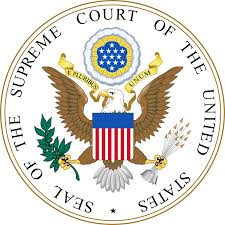
The Supreme Court has entered two rulings that profoundly change the balance of power in our government. These cases involve regulations, which are essentially laws made by agencies, not by Congress. Our government is set up so that Congress makes the laws, which operate at a 50,000 foot level. Agencies then fill in the details down “in the weeds.” So, for example, Congress passed the Clean Air Act, which said we need to clean up the air quality in polluted areas and maintain the air quality in areas that aren’t yet too polluted. It was then up to EPA to figure out how to achieve those goals, and it did so by enacting regulations.
Until one of the Supreme Court cases—Loper Bright—federal courts gave deference to those agency regulations (called “Chevron deference” because it was announced in a case in which Chevron was a party). So if EPA said 10 parts per billion of lead in the air is the limit, judges were not allowed to substitute their judgment—not allowed to say, I think 100 parts per billion is a better limit. The basis for this deference was the recognition that the scientists in EPA are far more qualified to determine the safe level of lead than a judge. However, Loper Bright eliminated that deference.
The other seismic change relates to the time for challenging regulations. The law establishes a six-year period for challenging a regulation—any challenge must be brought within that period of time. However, in Corner Post, the Supreme Court changed the ground rules, saying that the six-year period begins for each company when the regulation is first enforced against that company. Now, someone wanting to challenge a decades old regulation simply needs to form a new company, wait for the old regulation to be enforced against the new company, and then the new company can challenge the regulation in court.
So, why should ordinary people care about this? Because it strongly favors businesses over ordinary people. Take our example about lead in the air. It costs companies money to comply with tough environmental limits. A company wanting to avoid those costs may now identify a judge who is pro business, form a new company in the judge’s jurisdiction, and then sue. That judge is now free to say, with absolutely no scientific basis, EPA was too aggressive and the company’s profits are harmed, so a higher lead level is more appropriate.


